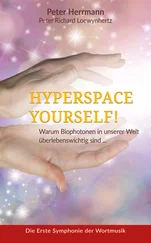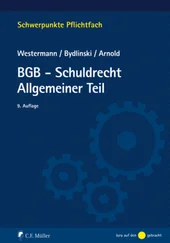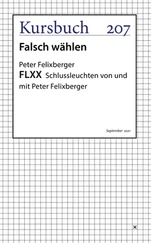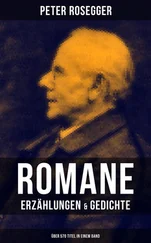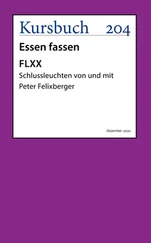When the president pressed them for their views, most of the other seismologists agreed with Weston’s assessment. They were professionally loath to make any predictions. Several bluntly told the president it would be unethical for them to try to do so. Like Weston, they insisted they needed more data.
Weston’s assistant. Stan Marshal, spoke about the need to set up more seismic instruments along the fault that had been discovered near Caruthersville. Missouri.
Atkins noticed how the big man glanced at Weston as if looking for guidance.
As he had with Weston, Ross interrupted Marshal in midsentence. “Let me ask you the same question I just put to Doctor Weston. Do you think we’re going to have another earthquake?”
Marshal shook his head. “I don’t know, sir.”
“I didn’t ask what you know, doctor,” Ross snapped. He had a sharp, lashing voice and looked increasingly angry. “I asked you what you think, your opinion. There’s a difference.”
Marshal didn’t respond. He sat back in his chair and shook his head.
Atkins was struck again by how physically exhausted Ross looked. Only the eyes showed any life. They were animated, boring, intense.
The president slowly surveyed the faces of those seated around him. “We’ve had one magnitude 8.4 earthquake and the ground, forgive me in this shrine to Elvis, keeps rocking and rolling. I’ve been informed about the three big quakes that occurred early in the last century. Does anyone here think we’re in for a repeat performance? Yes or no? I’ll settle for your best guess, anything.”
No one raised a hand. Atkins wasn’t surprised. He understood that Weston wasn’t being an obstructionist on this issue. He was merely voicing the real concerns of the scientific majority. Offering an opinion that proved wrong in such dire circumstances would be a professional death sentence. You simply didn’t risk such a thing without a lot of careful thought and soul searching. But there was no time for any of that. The president wanted an answer. Now.
Ross crumpled his empty coffee cup and angrily threw it against the wall. “You’re the goddamned experts. You’re supposed to weigh the pros and cons and offer an opinion. I need some kind of prediction, and if you don’t like that word, call it a risk assessment. The people who live here need it, deserve it. Is that too much to ask? Are we going to have another major earthquake?”
Draper spoke up. He was standing behind the president taking detailed notes.
“Doctor Atkins, what do you think?”
It had been much easier to offer an opinion outside. Atkins decided to keep it short and simple. “From the data I’ve seen, the way the fault keeps expanding, yes, I think we’ve got to consider the likelihood of another high-magnitude earthquake. It would be negligence on our part not to.”
Ross shot a glance at Steve Draper. Staring straight at Atkins, the president said, “Do you think another major quake is likely?”
“I think we should assume so and try to prepare accordingly,” Atkins said. “My personal opinion is that the chances of a big quake sometime soon are a little better than fifty percent. And that’s just an opinion.”
Weston and several other seismologists in the overheated room spoke up at once, objecting. As sweat rolled down his cheeks and soaked his shirt, Atkins knew what was happening. Now that he’d stuck his neck out, his esteemed colleagues were going to chop it off.
“I’ve got to disagree with Doctor Atkins,” Weston said coolly. “I’ve seen nothing in the data we’ve been able to collect that shows conclusively another 8.4 event is likely. The issue of how much strain energy remains locked in the ground after an earthquake is fraught with difficulties of interpretation. No adequate measurement tool exists. We can check for strain in any number of ways. We can measure dilatancy, the degree of cracking, uplift. We’re trying to get some of that information by satellite. But the problem is you could get seismic measurements right now along certain gaps or segments of the San Andreas Fault that would indicate a big quake is imminent. There’s plenty of deformation, plenty of seismic energy in the ground, but nothing’s happening there. Everything’s been quiet for over a century. Mr. President, the truth is we don’t know what’s going to happen here. If we issue a public statement suggesting we think another major quake is likely, it’s my opinion we’d be criminally responsible for the panic it would cause.”
“I second that,” said one of the USGS geologists, who was quickly supported by Stan Marshal.
The president asked for a show of hands. Seven of the ten in attendance voted with Weston. Three highly respected USGS scientists were among the group.
With Atkins were Holleran and Walt Jacobs.
“I’d be more inclined to agree with Doctor Weston if it weren’t for the power of the aftershocks we’ve been experiencing and their locations,” Holleran said. “I’m not aware of anything comparable to what’s happening here. Certainly nothing in my experience in California. We know big earthquakes kick up lots of aftershocks, but nothing like this.”
“Not to mention the existence of two new fault planes,” Jacobs said. “Both of them are larger than any other known segment in the New Madrid Seismic Zone. And we’ve also got the history, which you’ve already alluded to, Mister President.”
“The history is meaningless,” Weston said. “All we know is that within the last two hundred years three powerful earthquakes occurred in sequence. We know nothing about the previous seismic record.”
“Is there any way we could find that out?” Ross asked.
Holleran said, “We could dig for it, Mister President.” She explained how they could do trenching to search for the geological record of previous earthquakes. Their imprint would be left in the layered subsoil. It was just a matter of finding the right location and going deep enough.
Ross was intrigued and asked how it could be done.
“I’d dig a trench along one of the fault segments and see if we could find any evidence of old earthquakes—things like sand blows, fissure scars. Then I’d try to find something we could radiocarbon date—peat, carbonized wood.”
Weston shook his head. “That would be a costly diversion. It would take weeks to dig a trench even if we could find a suitable site and get backhoes out to it. Then more weeks to analyze the data. We don’t have the time or equipment to go on an archaeological fishing expedition.”
“It seems to me what we need more than anything right now is additional seismic data,” Draper said. “You’ve said as much yourself. Doctor Weston.”
Atkins had a suggestion, breaking the tense silence. “We could do some bore shaft explosions and tamping along that new fault.” He explained how they could capture computer-enhanced “images” of the fault by using sound waves generated by dynamite charges. Another technique was to use gas-powered tampers that resembled jackhammers. The results provided a seismic CAT scan. They used a sonogram technique, whereby the explosions produced sound waves harvested by special receivers. Low wave speeds indicated the presence of a fault and serious fracturing of the adjoining rock. These cracks, in turn, were evidence of strain building up. All of this could be transformed into two-dimensional computer images.
It would give them a better idea of what they were dealing with—the shape and structure of the fault and how deep it extended. Atkins especially wanted to look at the place where the newly discovered Caruthersville Fault intersected with the New Madrid Seismic Zone. It was certain to be an area of severe stress.
Jacobs and some of the other seismologists liked the idea.
Читать дальше






